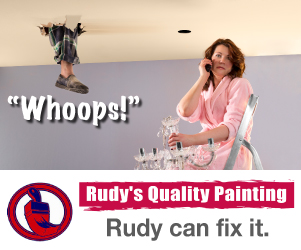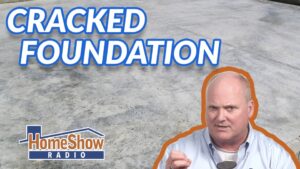Dan:
I am Dan with Concrete Raising Corporation. And we’re here this morning looking at a patio that is starting to move. You can tell from this fire pit that we have issues of slabs popping off. You have cracks opening up, and then through the tiles you can see where it’s starting to break off and kind of slide. Now, the cause for this is probably a little bit of everything. You have a tree that’s really beautiful, but it’s taking out moisture, which causes settlement as the soils contract. And in Houston, there’s a lot of clay in the soil, and as clays lose moisture, you get settlement.
So with this job, we decided polyurethane because we wanted to use a smaller hole since this job has tile on it. The sizes for the holes for polyurethane are five eights. And for grout you’re looking closer to inch and three quarters. So a little bit bigger than this golf ball. So what we have here are a couple of different materials that we use to repair concrete. We have polyurethane and cementitious grout. The grout is basically a Portland Cement sand and topsoil. It goes in sort of like a pancake batter, flows underneath and hydraulic pressure lifts the panels up.
Our other option is polyurethane foam, they come in different densities. Here we have one that basically four pounds make a cubic foot of material, and this is basically two pounds that makes a cubic foot of material. So this would be cheaper because it uses less material. And for residential type jobs, that’s a little bit more appropriate to use a less dense material because you don’t have heavy vehicle traffic on it. Where this would be a DOT approved polyurethane foam. And every job that we go to we have to look at it and assess what are we trying to achieve, what material will best achieve that goal?
So he’s injecting polyurethane foam right now. There’s an A and B material that are mixing in the gun and as it is injected in the hole, it’s having a chemical reaction, which causes the foam to expand. And that foam is going to fill the voids and then once the voids are filled, we start to build pressure. And the pressure is what’s giving us the lift.
So there’s what we call a zip level that’s monitoring the lift. Right now it’s at 0.1. And as it’s moving, he can see how many tenths the slab is moving as he injects the material. And in this particular situation, we’re trying to more stabilize this area so it doesn’t fall further, but we can also get additional lift if we need it.
So we’re done patching. The goal of this job was really to stabilize this patio to keep it from getting worse. So we’ve gone through, we’ve gotten about a quarter of an inch along this whole edge, and in the process that material spread out, stabilize the soils, fill the voids, and that should help keep this from settling further in the future. There’s no silver bullet in Houston with the clays that we have, so we’re just trying to minimize the impact of the tree and the soils to make this last as long as possible.



